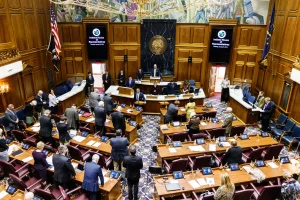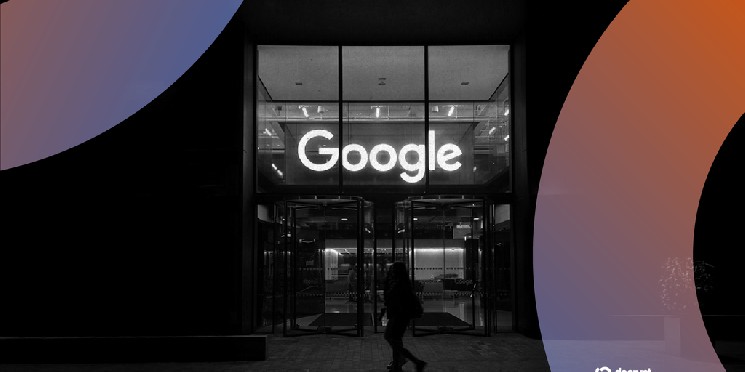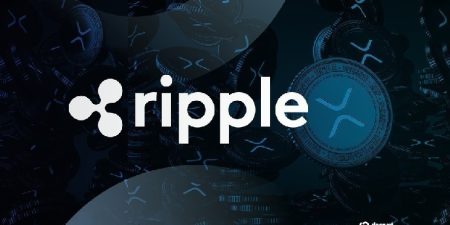MIT Brothers Fight to Keep Google Searches Out of $25M Crypto Fraud Case
Accused Crypto Thieves Claim Searches for “Wire Fraud Statute of Limitations” Were Part of Legal Consultations
In a high-stakes legal battle unfolding in Manhattan federal court, two MIT-educated brothers are fighting to prevent their Google search history from being used as evidence in their cryptocurrency fraud trial. Anton and James Peraire-Bueno, accused of orchestrating a sophisticated $25 million blockchain heist, filed a motion last Friday arguing that prosecutors should not be allowed to use their online searches for “top crypto lawyers” and “wire fraud statute of limitations” to establish criminal intent. The brothers maintain these searches occurred during privileged attorney consultations following the alleged April 2023 exploitation of Ethereum’s blockchain system, making them inadmissible in court proceedings.
The case represents a significant test of how digital breadcrumbs like search histories can be interpreted in the emerging landscape of cryptocurrency-related crimes. U.S. District Judge Jessica G.L. Clarke now faces a complex decision: determining whether searches conducted after an alleged crime can legitimately demonstrate consciousness of guilt or simply reflect prudent legal consultation during an ongoing investigation. The brothers’ defense team has presented detailed privilege logs demonstrating that these contentious Google searches coincided precisely with documented attorney communications, including a search for “top crypto lawyers” on the same day they initiated “communications with potential counsel seeking legal representation,” according to court filings.
“For the government to argue its preferred inference—consciousness of guilt of the alleged crimes—the government would first need to establish that any given search was connected to this case,” the brothers argued in their motion. “But the contents of the searches themselves do not show that.” Their legal team further contends that prosecutors lack witnesses who can provide necessary context for these searches, making any criminal inference “purely speculative.” This position finds some support among legal experts who emphasize the contextual nature of digital evidence. Even Alex Chandra, partner at IGNOS Law Alliance, told Decrypt that “Google search histories can be used as hints, but they’re context-dependent. The mere fact that someone googled something isn’t automatic proof of intent or guilt.”
The “First-of-its-Kind” Blockchain Manipulation Case
The Peraire-Bueno brothers were arrested in May 2024 on multiple serious charges including conspiracy, wire fraud, and money laundering. Federal prosecutors have characterized their alleged scheme as a “first-of-its-kind manipulation of the Ethereum blockchain,” suggesting the case could set important precedents for how the justice system handles sophisticated cryptocurrency crimes. According to authorities, the brothers leveraged their “specialized skills and education” from MIT to exploit Ethereum’s MEV-boost system—a mechanism that allows validators to outsource block production—fraudulently intercepting private transactions and diverting approximately $25 million in digital assets in just 12 seconds.
The timing and sophistication of the alleged scheme have drawn significant attention from both legal and cryptocurrency communities. Court documents reveal that the brothers retained legal counsel immediately after being “threatened by anonymous sandwich attackers” who demanded the return of the allegedly stolen funds. This timeline has become crucial to their defense strategy, as they argue that subsequent Google searches were conducted specifically for the purpose of obtaining appropriate legal representation in a highly specialized area of law, rather than indicating consciousness of guilt. The brothers’ legal team has emphasized that searches for terms like “wire fraud statute of limitations” occurred within the context of privileged attorney-client communications, making them protected and irrelevant for establishing criminal intent.
Legal experts note important distinctions in how search histories might be interpreted depending on their timing. “Post-conduct searches are weaker evidence,” Chandra explained, compared to searches conducted before alleged crimes, which can more clearly show planning or intent. “It still needs corroborating evidence showing that the searches align with criminal intent,” he added, “since it would be dangerous if Google searches are determinative alone.” This perspective underscores the broader implications of the case for digital privacy and evidentiary standards in an era when online activities leave extensive digital trails that can be subject to multiple interpretations.
Beyond Search Histories: Additional Evidence Disputes
The motion regarding search histories represents just one aspect of the brothers’ pre-trial strategy. Their defense team has also moved to exclude several other pieces of evidence they consider prejudicial or inadmissible. They have filed to block the admission of news articles containing what they describe as “inflammatory descriptions” of the alleged scheme, arguing these constitute inadmissible hearsay that could unfairly influence the jury. Additionally, they are challenging prosecutors’ attempts to introduce a Twitter screenshot purportedly showing their “false signature,” claiming that the government cannot properly authenticate an image from pseudonymous blockchain researcher samczsun’s tweet.
These evidentiary challenges highlight the unique complexities of prosecuting cryptocurrency crimes, where evidence often exists in digital formats that may not neatly fit traditional evidentiary standards. The case against the Peraire-Bueno brothers comes amid increasing regulatory and law enforcement attention to cryptocurrency-related crimes, with federal agencies developing more sophisticated approaches to investigating and prosecuting alleged blockchain exploits. As digital assets have grown in value and prominence, authorities have devoted greater resources to pursuing cases involving cryptocurrency theft, fraud, and market manipulation.
If convicted, each brother faces severe consequences, with potential sentences of up to 20 years in prison per count. The case represents not only a personal legal crisis for the MIT-educated defendants but also a significant moment in the evolution of cryptocurrency jurisprudence. How Judge Clarke rules on these evidentiary motions could establish important precedents for future cases involving blockchain exploits and digital evidence. The court’s decisions will help define boundaries around digital privacy, attorney-client privilege in the context of online searches, and the evidentiary standards required to establish criminal intent in cryptocurrency-related prosecutions.
Implications for Cryptocurrency Security and Legal Standards
The case against the Peraire-Bueno brothers illustrates the growing intersection of advanced technical knowledge and potential criminal activity in the cryptocurrency space. The alleged exploitation of Ethereum’s MEV-boost system—a mechanism that normally helps optimize transaction ordering—demonstrates how sophisticated actors can potentially manipulate blockchain infrastructure for illicit gain. Industry observers note that such cases highlight vulnerabilities within decentralized finance systems that may require both technical solutions and legal deterrents to address effectively.
The prosecution’s characterization of the alleged scheme as “fraudulently intercepting private transactions” raises important questions about the boundaries between clever arbitrage and outright fraud in cryptocurrency markets. As blockchain technologies continue to evolve and integrate with traditional financial systems, courts will increasingly need to define these boundaries with precision. The Peraire-Bueno case may serve as an important reference point for how the legal system distinguishes between legitimate cryptocurrency operations and fraudulent schemes, particularly when they involve highly technical mechanisms like MEV exploitation that few outside specialized circles fully understand.
As this case proceeds through the federal court system, it will be closely watched by cryptocurrency developers, investors, legal experts, and regulators alike. The outcome could influence how blockchain platforms implement security measures, how cryptocurrency businesses conduct due diligence, and how individual participants in digital asset markets understand their legal risks and responsibilities. For the Peraire-Bueno brothers, the stakes couldn’t be higher—beyond their personal freedom, their case may help shape the legal landscape for cryptocurrency innovation and regulation for years to come. As Judge Clarke considers their motion to exclude search histories and other contested evidence, her decisions will add another chapter to the rapidly developing story of how traditional legal frameworks adapt to the unique challenges posed by cryptocurrency technologies.













